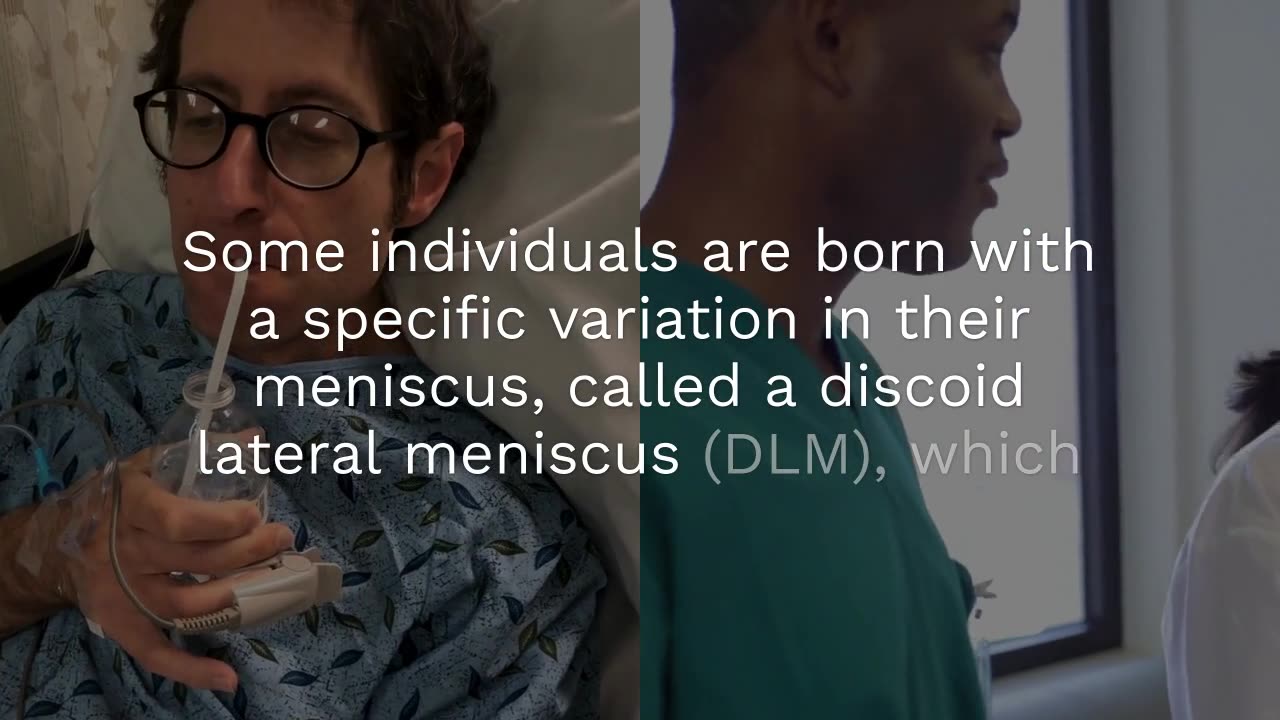Premium Only Content

Unraveling the Mystery of Knee Pain: Why Do Some Joint Deformities Hurt While Others Don’t?
Explaining why certain individuals with specific joint deformities experience symptoms, whereas others do not.
With the array of advanced imaging technologies at their disposal, healthcare professionals can diagnose tissue and joint deformities through non-invasive methods with exceptional precision. Yet, a vexing question persists: why do certain patients with specific joint deformities experience symptoms, while others do not?
The meniscus is a piece of cartilage that cushions the knee joint between the femur (thigh bone) and the tibia (shin bone). Some people are born with a congenital morphological variation in their meniscus, called a discoid lateral meniscus (DLM), where the meniscus is thickened on the lateral, or outer side of the knee. DLM malformations cause the lateral meniscus to form a circle rather than a crescent shape, thickening the cartilage and making it more prone to tears. Some patients develop symptoms such as knee pain and a locking, leading to surgery.
-
 1:13:14
1:13:14
Michael Franzese
3 hours agoEmergency Livestream: Zelenskyy vs Trump, DOGE, Epstein Files, Elon Musk
23.3K26 -
 1:32:06
1:32:06
The Quartering
4 hours agoZelensky Comes CRAWLING BACK, Fed Ex Jet BURSTS Into Flames, Elon's Psycho Ex & More
56.9K75 -
 27:11
27:11
AlaskanBallistics
13 hours ago $2.11 earnedRuger LC-10 Velocity and Accuracy Testing
17.9K1 -
 6:49
6:49
Russell Brand
23 hours ago"HE'S A RUSSIAN PLANT!" CNN Loses It ON AIR!
119K164 -
 13:10
13:10
The Rubin Report
1 day agoWhy the Real Challenge Is Just Beginning | Jordan Peterson
62.9K23 -
 1:02:55
1:02:55
Tactical Advisor
5 hours agoBuilding a Truck Gun -Battle Hawk Build of the Month | Vault Room Live Stream 017
42K1 -
 42:41
42:41
Athlete & Artist Show
4 hours ago $1.41 earnedSeason 5 Episode 3 LIVE
36.4K2 -
 3:25:14
3:25:14
I_Came_With_Fire_Podcast
12 hours agoThe US GOVERNMENT is PLANNING a UAP FALSE FLAG ATTACK
22.3K6 -
 18:10
18:10
Sideserf Cake Studio
6 hours ago $1.41 earnedIs This the ULTIMATE Cake Smashing Moment?
24.9K2 -
 12:51
12:51
Misha Petrov
19 hours agoTrump KICKS OUT Zelenskyy After HEATED White House Meeting!
23.9K62